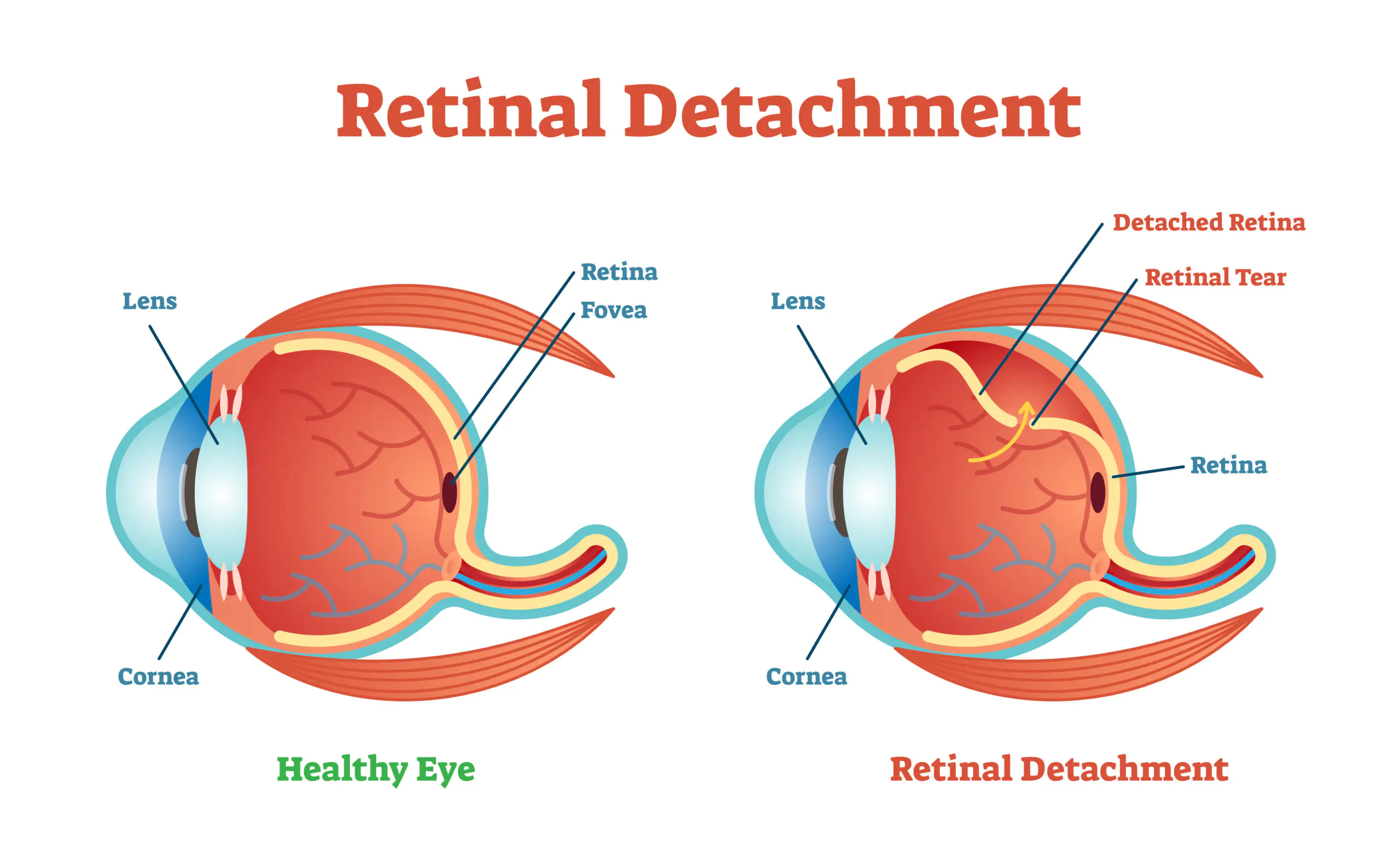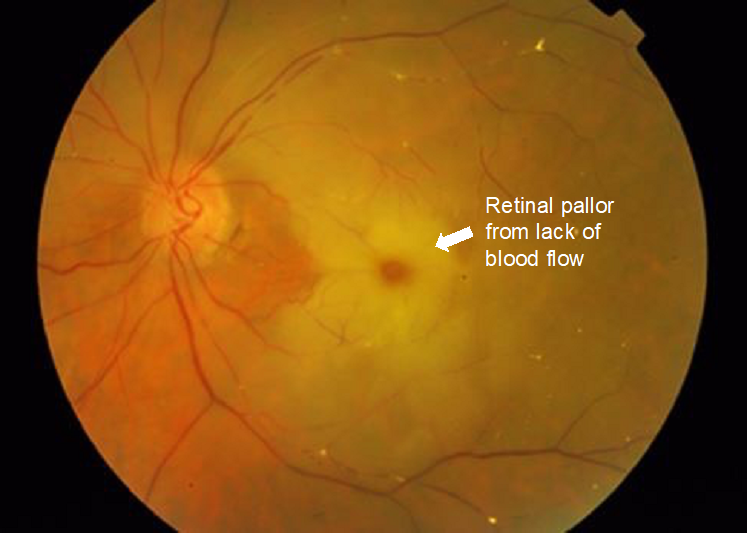
-
 Posted By Akio
Posted By Akio -
-
Comments 0
The retina is a highly specialized part of the eye that controls your central vision. Because of its size and delicate nature, there are many things that can damage the retina and subsequently lead to changes in vision. These changes in vision range from mild to severe and can include symptoms such as blurriness and distortion. In serious cases, patients with certain retina conditions are at risk of losing their vision permanently.
What are retinal diseases?
Retinal diseases are those that affect your retina, or the back layer of your eye. Light goes into your eye through your cornea and through the opening at the center of your iris called the pupil. Your lens focuses the light onto your retina.
Your retina is the part of your eye that’s responsible for converting light into electrical signals. Then, your optic nerve sends these signals to your brain, which turns the signals into images.
What causes retinal diseases?
There’s not just one cause for retinal diseases.
- You can inherit some conditions, like Usher syndrome, Stargardt disease and retinitis pigmentosa.
- Diabetes and high blood pressure can damage blood vessels, which then cause damage to your retina. Inflammatory conditions can also cause damage.
- Eye injuries can damage your retina and the macula. Macular pucker sometimes happens after eye surgery.
- Some types of retinal damage, like cytomegalovirus retinitis, occur after an infection. The retinal disease itself isn’t infectious, though.

When to see a retina specialist?
- Seeing floating specks or cobwebs.
- Blurred or distorted vision in which straight lines can look wavy.
- Defects in the side vision.
- Vision loss.
It’s important to pay attention to any changes in your vision and find care quickly. These are warning signs of potentially serious retinal disease, and you should immediately consult a professional or visit a specialised facility like Akio.
Types of retinal diseases
- Macular degeneration. In macular degeneration, the center of the retina begins to deteriorate. This causes symptoms such as blurred central vision or a blind spot in the center of the visual field. There are two types: wet macular degeneration and dry macular degeneration. Many people will first have the dry form, which can progress to the wet form in one or both eyes.
- Diabetic retinopathy. If you have diabetes, the tiny blood vessels in the back of your eye can deteriorate and leak fluid into and under the retina. This causes the retina to swell, which may blur or distort your vision. Or you may develop new, irregular capillaries that break and bleed. This also worsens your vision.
- Retinal detachment. A retinal detachment is defined by the presence of fluid under the retina. This usually occurs when fluid passes through a retinal tear, causing the retina to lift away from the underlying tissue layers.
- Retinal tear. A retinal tear occurs when the clear, gel-like substance in the center of your eye, called vitreous, shrinks and tugs on the thin layer of tissue lining the back of your eye, called the retina. This can cause a tear in the retinal tissue. It’s often accompanied by the sudden onset of symptoms such as floaters and flashing lights.
- Epiretinal membrane. Epiretinal membrane is a delicate tissue-like scar or membrane that looks like crinkled cellophane lying on top of the retina. This membrane pulls up on the retina, which distorts your vision. Objects may appear blurred or crooked.
- Macular hole. A macular hole is a small defect in the center of the retina at the back of the eye, called the macula. The hole may develop from atypical traction between the retina and the vitreous, or it may follow an injury to the eye.
- Retinitis pigmentosa. Retinitis pigmentosa is an inherited degenerative disease. It slowly affects the retina and causes loss of night and side vision.
Also Read:- What Is Eye Dilation?

Tips for Retinal Disease Prevention
- Regular Eye Examinations: Regular eye check-ups are essential in detecting retinal diseases early.
- Control Systemic Health Conditions: Conditions like diabetes and hypertension can affect eye health. Managing these conditions through diet, exercise, and medication can reduce the risk of developing retinal diseases.
- Healthy Diet and Nutrition: A diet rich in fruits, vegetables, and omega-3 fatty acids can help maintain retinal health.
- Avoid Smoking: Smoking increases the risk of age-related macular degeneration and other eye conditions. Quitting smoking can significantly reduce this risk.
- Wear Sunglasses and Protective Eyewear: Ultraviolet (UV) light can damage the retina. Wearing sunglasses that block 100% of UVA and UVB rays can protect the eyes from sun damage. Protective eyewear is also recommended during activities that pose a risk of eye injury.
- Limit Screen Time and Take Breaks: Prolonged exposure to screens can cause eye strain. The 20-20-20 rule (every 20 minutes, look at something 20 feet away for 20 seconds) can help reduce eye strain.
- Stay Hydrated and Maintain a Healthy Weight: Hydration is important for overall eye health, and maintaining a healthy weight can reduce the risk of diabetes, which can lead to diabetic retinopathy.
With early detection and care, vision can be preserved for many years to come. That’s why it’s so important for patients to understand their symptoms and know when to connect with a retina specialist. If you are experiencing any of the above symptoms and want to schedule an appointment with a retina specialist at Akio.
Retina-related issues require expert care. If you or a loved one has diabetes or sudden vision changes, don’t delay — consult a trusted retina specialist in Delhi today. Begin your journey to clearer vision with AKIO.
Common retinal diseases include diabetic retinopathy, age-related macular degeneration, retinal detachment, retinal tears, macular holes, epiretinal membranes, and inherited conditions like retinitis pigmentosa. These conditions can cause varying degrees of vision loss and require timely diagnosis and management.
Symptoms of retinal disease may include floaters, flashes of light, blurry or distorted vision, dark or empty areas in your visual field, sudden vision loss, and difficulty seeing at night. Any abrupt or gradual changes in vision should prompt an immediate eye examination.
Retinal diseases are diagnosed using dilated eye exams, optical coherence tomography (OCT), fluorescein angiography, and digital retinal imaging. Treatments include laser therapy, anti-VEGF injections, vitrectomy surgery, and, in some cases, medications or low vision aids for advanced disease.
Early warning signs include sudden floaters, persistent flashes of light, a shadow or curtain moving across your vision, blurry or distorted central vision, and rapid loss of side vision. These symptoms require urgent medical attention to prevent permanent vision loss.
Prevention and management include controlling blood sugar, blood pressure, and cholesterol; maintaining a healthy diet; not smoking; protecting eyes from UV light; and having regular eye check-ups. Early detection and treatment are crucial for preserving vision.
Retinal diseases can be caused by diabetes, ageing, genetic factors, trauma, high blood pressure, inflammation, and blocked blood vessels. Some conditions, like retinitis pigmentosa, are inherited, while others result from lifestyle or systemic health issues.
People at highest risk include those with diabetes, high blood pressure, a family history of retinal disease, older adults, smokers, and individuals with previous eye injuries or surgeries. Regular eye exams are essential for early detection in these groups.
A retinal tear is a small break in the retina, often causing floaters and flashes. Retinal detachment occurs when fluid passes through a tear, lifting the retina from its underlying tissue, leading to vision loss if not treated promptly.
Recent Posts
- Retina Injections (Anti-VEGF): Procedure, Cost, Effectiveness, Risk & Recovery Experience
- Early Signs of Retinal Detachment You Should Never Ignore
- Floaters vs Retina Detachment – How to Know the Difference?
- Manage Your Retina Conditions: Simple Healthy Habits for Better Vision
- Why Choosing the Right Retina Doctor in Delhi Can Save Your Vision



